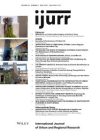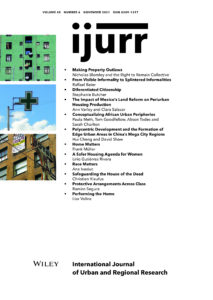In Lima’s pueblos jóvenes —the vast informal settlements that surround the city—migrants who settled there also founded graveyards. Cemeteries are a natural socio‐spatial extension of the settlements and houses that urbanites constructed with their own hands. Lima’s peripheral cemeteries are permeable spaces which are often regarded as zones of risk and insecurity. Visitors, vendors and taxi drivers fear theft or assault. Grave looting and trafficking of burial land are common occurrences. Moreover, as a breeding ground for mosquitos, cemeteries are potential hotbeds of lethal diseases. Adding to such ‘measurable’ risks are the intangible risks and risk aversion connected with spiritual activities. This essay grapples with the conceptualizations of insecurity and risk in areas where the houses of the living and the dead converge, taking Lima’s municipal district of Villa María del Triunfo and its Virgen de Lourdes cemetery as a case study. This intervention hence proposes a spatially inclusive conceptualization of security which embraces deathscapes as part of the inhabited urban space. Furthermore, based on the diverse ‘threats’ and ‘risks’ encountered in the cemetery space, I propose an intersectional approach sensitive to tangible and intangible insecurities and to the responses to avert these. With this approach I aim to unravel the various dimensions of (im)materiality in the security debate.

